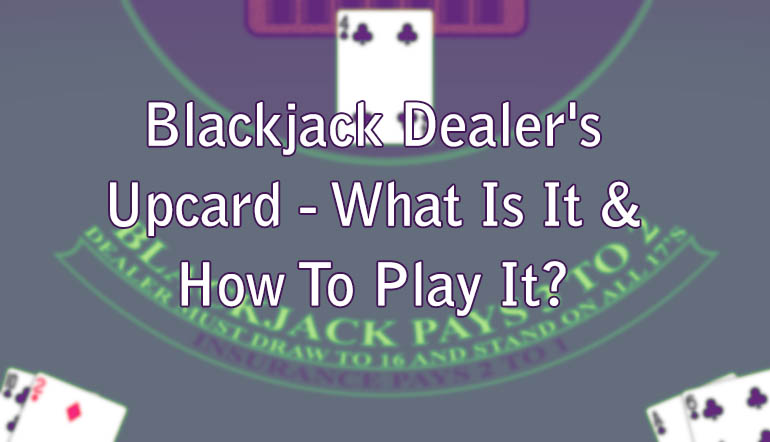
Blackjack is a popular and exciting online casino game that involves an element of strategy as well as a game of chance. One of the most critical elements of the game is the dealer's upcard, which can give you an idea of how to play your hand.
In this post, we will take a closer look at the dealer's upcard and how you can use this information to your advantage when playing blackjack.
What Is The Dealer's Upcard In Blackjack?
The dealer's upcard is simply the card that is face up on the dealer's side of the table. This card is a critical part of the casino game because it can give you valuable information about the dealer's hand and help you to decide how to play your own hand.
For example, if the dealer's upcard is a 2, you know they have a higher chance of busting (going over 21) because their total hand value is likely to be low, so they are more likely to have to hit.
On the other hand, if the dealer's upcard is a 10, you know they have a higher chance of having a strong hand because their total hand value is likely higher.
Remember, the main objective of blackjack is to beat the dealer while not going above 21. Therefore, the upcard can be instrumental in giving you an edge.
How To Read The Dealer's Upcard In Blackjack
Reading the dealer's upcard is a crucial part of playing blackjack effectively. There are several key things to keep in mind when trying to read the dealer's upcard:
- The value of the card: The value of the dealer's upcard can give you an idea of their hand strength and the likelihood of them busting.
- The dealer's chances of busting: Based on the value of their upcard, you can determine their chances of busting. For example, if the dealer's upcard is a 2, 3, 4, 5, or 6, their chances of busting are higher because they are more likely to have to draw a card that may push them over 21.
- The dealer's strategy: Depending on the value of their upcard, the dealer has a set strategy for how to play their hand. For example, if their upcard is a 7, 8, 9, or 10, they are likely to stand because they have a strong hand. On the other hand, if their upcard is a 2, 3, 4, 5, or 6, they are more likely to hit because they are more likely to bust.
But, the most important thing to remember, which would help you better read the dealer's upcard, is to know the dealer's rules. Every blackjack table has different rules about what the dealer must do based on their upcard, such as whether the dealer has to stand or hit on a soft 17. So, make sure you understand these rules before you start playing.
By keeping these things in mind, you can use the dealer's upcard to your advantage and make better decisions about how to play your hand. Additionally, you can use the dealer's upcard to help you gauge your odds of winning, which can be especially helpful if you are a beginner player.
How To Play Your Hands Against a Dealer's Upcard
In blackjack, your goal is to beat the dealer by having a hand value of 21 or as close to 21 as possible without going over. So, the dealer's upcard can significantly impact how you play your hand to achieve this goal.
Playing Against 2 or 3 Upcard
If the dealer's upcard is a 2 or a 3, the dealer has a weak hand and is more likely to bust. In this situation, it's advantageous for you to stand on a hand value of 12 or higher.
So, if your hand value is between 17 and 20, it's best to stand, as the dealer is more likely to bust. But if you are holding anything less than 10, it may be best to hit.
Playing Against 4, 5 or 6 Upcard
If the dealer's upcard is a 4, 5, or 6, the dealer has a slightly stronger hand and is less likely to bust. In this situation, you should hit on a hand value of 12 or lower and stand on a hand value of 17 or higher.
If your hand value is between 13 and 16, it's best to hit, as the dealer is still in a relatively weak position and may bust.
Playing Against 7 or 8 Upcard
If the dealer's upcard is a 7 or an 8, the dealer has a stronger hand, and you should be more cautious. In this situation, you should hit on a hand value of 16 or lower and stand on a hand value of 17 or higher.
If your hand value is between 17 and 21, it's best to stand, as the dealer is less likely to bust with a strong upcard.
*All values (Bet Levels, Maximum Wins, etc.) mentioned in relation to this game are subject to change at any time.
